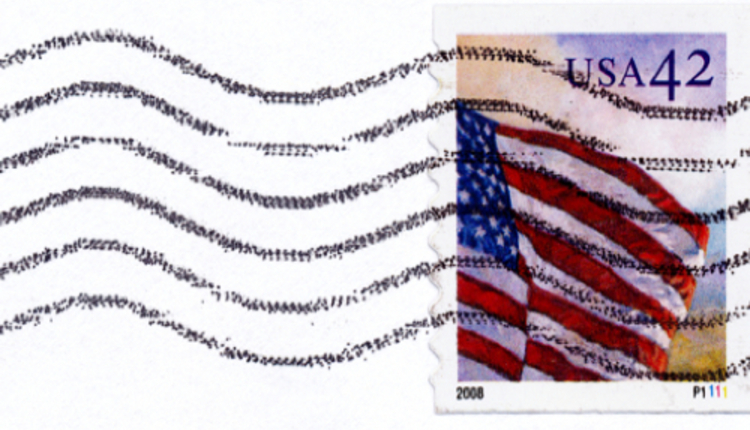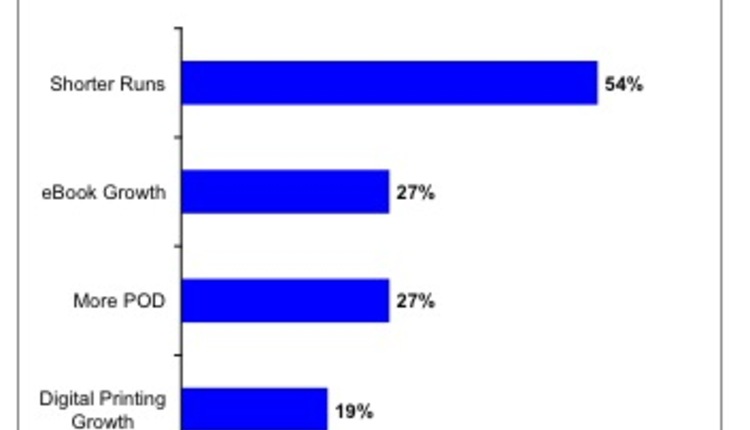
We are just wrapping up studies of transactional printing in North America and Western Europe. I will focus on North America in this article, but many of the macro trends in the market are playing out in Europe as well, though with variations according to country-specific demographics, laws and cultural considerations. In North America, we find increasing disparity between third-party (commercial) transactional printers and in-house operations. The differences, which seem to be accelerating in recent years, are being driven by market consolidation, which, in turn, is caused by electronic diversion.
It’s no secret that transaction mail is declining and no great mystery as to why. United States Postal Service (USPS) reports show that during the recession, First-Class business mail, which is dominated by transactional mailings, was initially more resilient than Standard Mail, but in the years immediately following, the decline in First-Class business mail has continued at a higher rate than Standard Mail. From 2010 through 2013, the rate of decline in Standard Mail improved to about -0.6%. The drop off in First-Class business mail volume, however, has shown little to no improvement as the economy has stabilized; from 2010 through 2013, it declined at a rate of -3.8%.
In fiscal year 2013, First-Class Mail generated about 55% of USPS revenue and accounted for about 43% of its mail volume, while Standard Mail accounted for about 32% of revenue and 52% of volume. For its full fiscal year, First-Class Mail revenue declined by -3.1%, while Standard Mail revenue increased by 1.6%. Total mail volume declined by -2.4% in 2013, with First-Class Mail volume dropping by -4.2% and Standard Mail volume increasing by 1.5% over the prior year.
The decline in transaction mail is caused by an increase in the adoption of electronic delivery; an increasing portion of consumers prefer it, and companies are jumping at it in order to save the costs associated with printing and mailing. In 2012, households paid more monthly bills elec¬tronically (6.7) than by mail (4.8). Since 2000, the average number of bills paid electronically more than quadrupled in the US, while payment by mail dropped about 45%. Third-party and in-house transactional printers we survey cite electronic diversion as the leading trend in the market.
We typically interview and survey the largest transactional printers (commercial and in-house) in order to capture a large slice of the market. Despite continued declines in First-Class business mail, however, nearly three-quarters of the commercial providers we surveyed recently expect some growth in their transactional print volume over the next three years; only 16% project a decline in their transactional print volume, and 12% expect their print volume to be flat.
By contrast, in-house transactional printers cite a decline in print volume as the second leading trend in the market, after electronic diversion. According to one large in-house operation, “Insurance policies are converting to electronic delivery—we have had a 30% decrease in policy volume since 2008; payment alternatives and eBills have also suppressed documents.”
Third-party providers know where their volume growth is coming from: an increase in outsourcing and from other commercial competitors exiting the market. Consolidation is causing transactional volume to be shifted increasingly to large third-party operations, which can afford and justify more efficient, but expensive, equipment, such as inkjet presses and white paper factory production lines. Many in-house operations are simply hunkered down: Their equipment is amortized; their bill and statement designs have been simplified and standardized; and they are reluctant to ask for capital expenses in the face of declining print volume.
Life will remain tough for third-party and in-house operations as volume declines. Commercial providers will face increasing price competition, and in-house operations will face a stepped-up desire on the part of upper management to move away from print. This is not to say in-house operations are doomed. They are not: Many companies prefer to maintain control of all of their communications for a variety of reasons. Neither will the majority of in-house operations be permanently shut out of the rapid transition toward inkjet and full-color printing. We are already seeing inkjet offerings geared more for lower volume operations, including high-quality cut-sheet inkjet models.
David Davis is a director for INTERQUEST, a market and technology research and consulting firm in the field of digital printing and publishing. Its most recent study of transactional printing is “Digital Transactional Printing in Europe: Market Analysis & Forecast (2014-2019).” A companion North American study will be published in November 2014. For more information, contact INTERQUEST at 434-979-9945 or visit www.inter-quest.com.




















